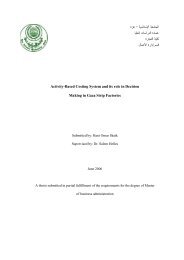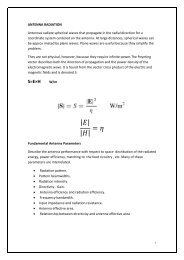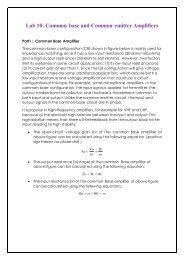A prActicAl guide Benchmarking in european Higher education
A prActicAl guide Benchmarking in european Higher education
A prActicAl guide Benchmarking in european Higher education
Create successful ePaper yourself
Turn your PDF publications into a flip-book with our unique Google optimized e-Paper software.
Fourth, benchmark<strong>in</strong>g is not a fad, but a strategy for improvement. It assists<br />
managers <strong>in</strong> identify<strong>in</strong>g practices that can be adapted to build plans that are<br />
realistic and acceptable to higher <strong>education</strong> communities, and <strong>in</strong> this way<br />
achieve higher performance goals.<br />
Another misconception about benchmark<strong>in</strong>g is that it is only a process of<br />
measur<strong>in</strong>g best performance (APQC, 1999, www.apqc.org). It is sometimes<br />
wrongly believed that after discover<strong>in</strong>g the best-performance benchmark,<br />
the organisation should turn to its own creative resources to meet or beat the<br />
benchmark <strong>in</strong> whichever way it can th<strong>in</strong>k of. <strong>Benchmark<strong>in</strong>g</strong> is not just a comparative<br />
analysis of how an <strong>in</strong>stitution matches up to the others <strong>in</strong> terms of<br />
different performance measures, s<strong>in</strong>ce such a comparison does not by itself<br />
br<strong>in</strong>g change (CHEMS 1998). The most important aspect of benchmark<strong>in</strong>g is<br />
learn<strong>in</strong>g from others and <strong>in</strong>novative adaptation of good practices that help<br />
achieve best performance. It is best practice even more than best performance<br />
for which benchmark<strong>in</strong>g strives, even if it may start by f<strong>in</strong>d<strong>in</strong>g best performance.<br />
It is also not a ‘process re-eng<strong>in</strong>eer<strong>in</strong>g,’ where <strong>in</strong>ternal processes are <strong>in</strong>vestigated<br />
and redesigned without reference to another organisation’s practice.<br />
<strong>Benchmark<strong>in</strong>g</strong> is also not just a survey, where data are presented <strong>in</strong> aggregated<br />
or averaged terms.<br />
In this respect, the benchmark<strong>in</strong>g literature often employs the concepts of<br />
‘true’ and ‘false’ benchmark<strong>in</strong>g. It may be overly normative to judge what is<br />
true or false - words can be used <strong>in</strong> any way one likes. However, this dist<strong>in</strong>ction<br />
may be helpful to show where we stand.<br />
A Practical Guide - <strong>Benchmark<strong>in</strong>g</strong> <strong>in</strong> European <strong>Higher</strong> Education<br />
45

















